+76
Arrow
Arkanghelsk
diabetus
thegopnik
TMA1
ALAMO
caveat emptor
lyle6
Hole
Podlodka77
limb
eridan
Russian_Patriot_
Yugo90
PhSt
kvs
LMFS
miketheterrible
Ives
hoom
dino00
Big_Gazza
Skandalwitwe
BM-21
gaurav
KomissarBojanchev
PapaDragon
T-47
Enera
George1
Singular_Transform
Benya
jhelb
Project Canada
GunshipDemocracy
OminousSpudd
d_taddei2
Zivo
Isos
JohninMK
x_54_u43
franco
Kyo
cracker
Cucumber Khan
2SPOOKY4U
max steel
Hachimoto
Mike E
Werewolf
magnumcromagnon
Vann7
dionis
Vympel
zg18
Cyberspec
TheArmenian
medo
TR1
AlfaT8
flamming_python
SOC
Protyvsikh
Sujoy
Mindstorm
Ogannisyan8887
Austin
IronsightSniper
coolieno99
Viktor
GarryB
Russian Patriot
Admin
Vladislav
sepheronx
Stealthflanker
80 posters
Iskander-M/K (SS-26 Stone):

Arrow- Posts : 3471
Points : 3461
Join date : 2012-02-13
- Post n°502
 Re: Iskander-M/K (SS-26 Stone):
Re: Iskander-M/K (SS-26 Stone):
Unfortunately the ICCM's proved obsolete very quickly with the advent of the ICBM. wrote:
Not quite. Currently, cruise missiles are returning to ICCM ranges. The new version Kh 101, 102 has a range of about 6,500. That's already an intercontinental range.
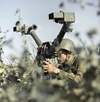
Mir- Posts : 3824
Points : 3822
Join date : 2021-06-10
- Post n°503
 Re: Iskander-M/K (SS-26 Stone):
Re: Iskander-M/K (SS-26 Stone):
Arrow wrote:
Not quite. Currently, cruise missiles are returning to ICCM ranges. The new version Kh 101, 102 has a range of about 6,500. That's already an intercontinental range.
Not quite.
The real successor is the 9M730 Burevestnik nuclear cruise missile
Big_Gazza likes this post

lyle6- Posts : 2586
Points : 2580
Join date : 2020-09-14
Location : Philippines
- Post n°504
 Re: Iskander-M/K (SS-26 Stone):
Re: Iskander-M/K (SS-26 Stone):
Nah, ATACMs is just shit. Their problem is they tested it against equally shit missile defences - theirs.GarryB wrote:
What it lacks is the onboard sensors that Iskander and Kinzhal have to detect enemy air defence systems (radar) and incoming active radar missiles. The Russian missiles detect incoming threats and actively manouver to evade them... it also releases decoys and chaff and flares to distract the enemy air defences...
There is a reason ATACMS have been shot down and Iskanders and Kinzhals have not.... and it is not just because the Russians have a layered and fully operational IADS system and the Ukrainians don't. There are several SAM systems the Russians use today that can engage a ballistics missile or a missile performing some manouvers in flight.
The manouvers are blind so they would be like a fighter pilot making a few random course corrections occasionally... it is not going to stop a SAM from hitting it.
In comparison the Kinzhal and Iskander have sensors to detect enemy air defence systems and incoming missile threats and based on how far away they are and the angle they are coming at the Kinzhal actively manouver to be difficult targets and also have jammers and decoys and flares it can release to make the work of the air defences even harder.
Just flying at 50km altitude makes things tough... and it is something the Kh-32 also does.
The Kh-22M flys at about 23-26km altitude which makes it tricky, but the Kh-32 takes it a step further.
Both missiles are liquid fuelled rockets with two rocket chambers... a lower energy cruise engine and a high energy launch and climb engine... sound familiar?
The larger rocket motor is lit to climb and accelerate to altitude and speed and then the less powerful rocket chamber is used to cruise to the target location and then the range dictates what happens next... it might run both engines in a high speed dive on the target to hit at max speed or it might not have enough fuel and do a pullup and then dive near vertically on the target using the fuel it does have... depending on the range.
It is surprising how many air defence systems cannot stop a missile coming down vertically... a difficult target as most tracking radars can't point vertically.
Of course some make it hard for themselves like Patriot whose radar only covers about 120 degrees... making individual systems set up for ambush the way Kiev uses them leaves a huge blind spot and that is not including from directly above.
Iskander is tested against the world class S-300VM series. Its the shit. Overpowered shit even.
GarryB, Big_Gazza, The-thing-next-door and LMFS like this post

GarryB- Posts : 40537
Points : 41037
Join date : 2010-03-30
Location : New Zealand
- Post n°505
 Re: Iskander-M/K (SS-26 Stone):
Re: Iskander-M/K (SS-26 Stone):
I wrote it wrong. Several dozen seconds. Modern ICBM ballistic missiles with a range of 11,000 km have an engine phase of just over 2 minutes.
They also have three stages with three sets of engines each being smaller and lighter and pushing a smaller lighter load.
So three engine burns... are they two minutes each?
A liquid fuelled rocket like the Kh-32 can optimise its fuel burn depending on the range to the target and the flight profile chosen for the attack, and of course any air defence sites it might fly past on its way to its target... A solid rocket fuel missile like iskander has fixed fuels with fixed burn times, but you say it only uses high energy rocket fuel like no other long range solid propellant missile...
Exactly. I'll tell you something else, ICBM missiles operate for 2 to 4 minutes and then another 20 minutes fly without propulsion as MIRV warheads.
ICBMs have three rocket stages that are all used to accelerate and climb out of the atmosphere. The third stage is the warhead bus that manouvers left and right and up and down to release individual warheads in the direction of each of their targets on the flight path the missile is taking.
At an altitude of 50 km it is very thin and the drag is very small.
Have you ever stuck your hand out the window of a car in motion? In a carpark or at very low speed the force is not that noticeable, but on a motorway the force of the airflow drags you hand back. Even at 50km/h you can hold your hand out with your palm down with a flat hand and you can feel the airflow around your hand... angle your hand up or down and you can feel the very significant upwards or downwards for this creates.
Pilots flying at mach 2.8 in a MiG-31 wear all sorts of heavy pressure suit gear and one British guy whose feet were too big for the boots available wore normal shoes during a flight to 20km altitude and high speed and was told in the event he had to eject he would be landing on bloody stumps.
Even very thin air accelerated to mach 7 has force and energy... and will slow down objects in flight.
Iskander does not fly to the target with the engine burn, similarly to long-range air-to-air missiles, which fly kinetically for a significant part of the route, even the 48N6DM, or R037M. Only the Meteor has a ramjet engine on longer. However, those with standard engines
As I have explained several times, it is not efficient to use full high thrust engines as the only fuel in a rocket missile... an AIM-9 missile has a range of less than 10km at low altitude low speed launch because the thicker air limits the speed it can accelerate to and then the thicker air slows it down faster than if launched from higher faster launch platforms.
Missiles like R-27 and R-77 and R-33 use different rocket fuels to maximise performance... the high energy fuel accelerates and climbs to altitude but it burns very quickly so only having that fuel is a waste because it will only burn for a relatively short time.
The most efficient flight performance is achieved by something like the Kh-32 which has two rocket exhausts... you can see them on the rear of the missile... it is teh same for the Kh-22M that it is based on, but the Kh-32 has more powerful fuel.
The powerful fuel is burned to allow the missile to climb to altitude and accelerate to high speed, but if it only had that thrust setting it would not go very far.... think of it as a fighter using full AB to take off and climb to altitude... if it is an Su-7 fighter it can operate its AB for about 7 minutes and then it is out of fuel. If it uses the AB to take off quickly and climbs to 10km altitude and then reduces throttle to maybe 60% thrust it can cruise to a much greater flight range than if it used full power all the way.
Iskander does not need full power thrust all the way to the target... 30-40 seconds of full thrust will get it off the ground and accelerating to a decent altitude and speed of mach 6 to mach 7... but then instead of another 20 seconds worth of the same rocket fuel, it starts burning a lower energy fuel that essentially acts like a base bleed system on an artillery shell that reduces drag to close to zero so it can coast and high speed for several minutes.... it keeps the flight speed high and the longer it does this the better the flight range, but in the case of the Iskander it is not about extra range it is about being able to manouver at very high speeds and high altitudes to evade threats using tiny little low drag control surfaces like those you see on Patriot or even S-300.
Even the fins on AMRAAM are rather small and would struggle to manouer with a missile using thrust vectoring.
You can also see that the Iskander E does not have those thrusters engines. You can see that the export version has limited maneuvering.
What small thrusters?
Ok so you still believe those fins are fixed. From an engineering perspective - wouldn't it be far more simple and efficient to just weld the whole base of the fin to the missile's body if that was the case?
No. Normal air to air and air to ground missiles have fixed and moving control surfaces removed for storage and transport and have them attached before loading them onto aircraft. Wielded fins add extra size to the storage container.
Those two programs you mentioned were pale in comparison to what the Soviets had at the time - so not even worth mentioning!
No argument from me there.
Unfortunately the ICCM's proved obsolete very quickly with the advent of the ICBM.
They proved obsolete because ICBMs were too fast to intercept and could achieve better range by leaving the drag of the atmosphere.
A modern version using nuclear propulsion, like Thunderbird, or a scramjet powered missile that could fly very high and only carry fuel instead of having to carry fuel and oxidiser like a rocket needs to means they make rather more sense now.
It is like the difference between trying to track an artillery shell and trying to track a bomber aircraft.
In fact having thrust vectoring engine exhausts as part of the scramjet motor means you could probably do away with all external fins and strakes... further reducing drag and improving performance.
Not quite. Currently, cruise missiles are returning to ICCM ranges. The new version Kh 101, 102 has a range of about 6,500. That's already an intercontinental range.
Thunderbird has essentially unlimited range too and is nuclear powered.
Iskander is tested against the world class S-300VM series. Its the shit. Overpowered shit even.
Ironic even that they are developing a simpler cheaper more basic model for general targets at greater distances.
Iskander will be excellent for enemy long range SAM sites and even ABM systems if they get in range, but for most targets a simpler cheaper missile that actually is ballistic makes more sense.
A bit like having guided artillery shells and also having conventional shells for use against area targets...

Mir- Posts : 3824
Points : 3822
Join date : 2021-06-10
- Post n°506
 Re: Iskander-M/K (SS-26 Stone):
Re: Iskander-M/K (SS-26 Stone):
Apologies in advance for posting a conversation but it helps for clarity and perspective.
The Iskander is transported as a complete missile as the fins are relatively small compared to to size of the missile's body.
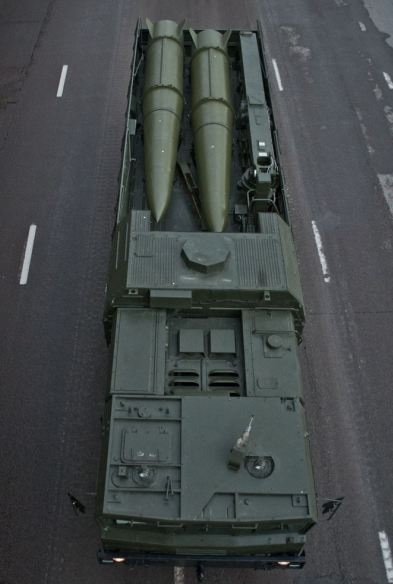
A great picture of the size of the fins compared to the missile body. No need to remove or fold them during transport, but feel free to post images that indicate otherwise.
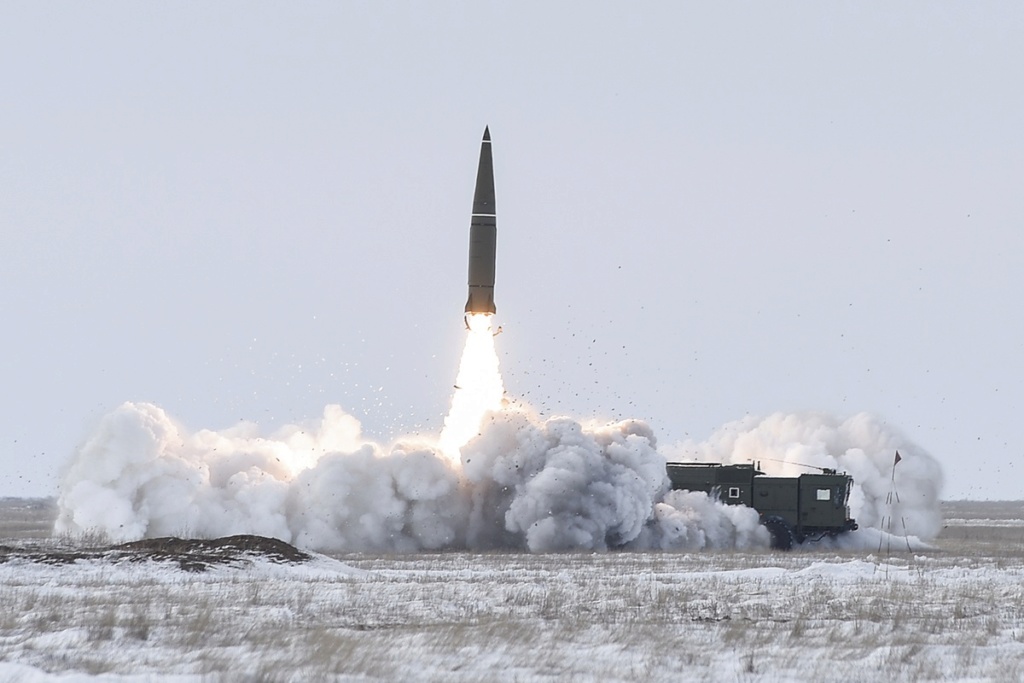
Mir wrote:Ok so you still believe those fins are fixed. From an engineering perspective - wouldn't it be far more simple and efficient to just weld the whole base of the fin to the missile's body if that was the case?
GarryB wrote:No. Normal air to air and air to ground missiles have fixed and moving control surfaces removed for storage and transport and have them attached before loading them onto aircraft. Wielded fins add extra size to the storage container.
The Iskander is transported as a complete missile as the fins are relatively small compared to to size of the missile's body.

A great picture of the size of the fins compared to the missile body. No need to remove or fold them during transport, but feel free to post images that indicate otherwise.


Mir- Posts : 3824
Points : 3822
Join date : 2021-06-10
- Post n°507
 Re: Iskander-M/K (SS-26 Stone):
Re: Iskander-M/K (SS-26 Stone):
Now here is a excellent example of some quality engineering when it comes to fixing fins to a missile body.
The sample missile below is much smaller than the Iskander but each of the fins have two attachment points for a much stronger fix compared to the Iskander. If the Iskander fins were fixed one would have at least expected two attachment points as in the sample below - especially since the much larger Iskander is maneuvering at hypersonic speeds! Having a small single attachment point on the Iskander's fin only makes sense if it's moveable.
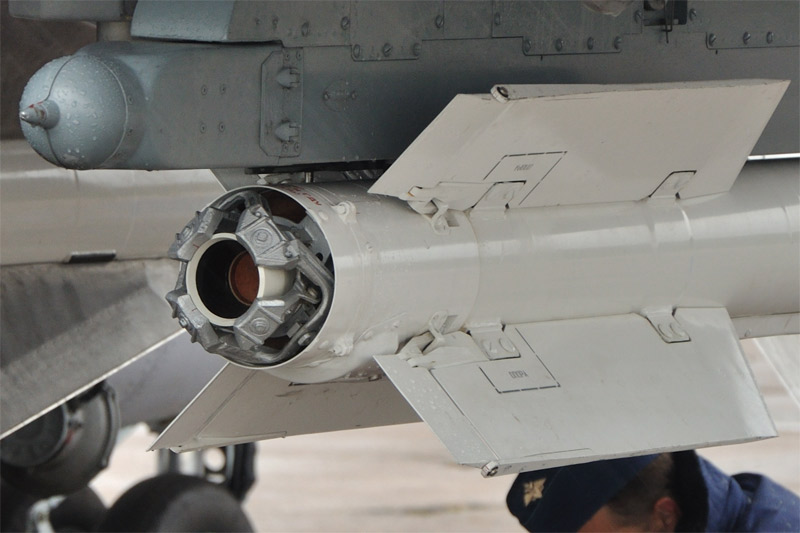
Btw - I have never seen those small control surfaces in the above picture in a deflected position. They must be fixed then, or have anyone seen any evidence suggesting otherwise?

The sample missile below is much smaller than the Iskander but each of the fins have two attachment points for a much stronger fix compared to the Iskander. If the Iskander fins were fixed one would have at least expected two attachment points as in the sample below - especially since the much larger Iskander is maneuvering at hypersonic speeds! Having a small single attachment point on the Iskander's fin only makes sense if it's moveable.

Btw - I have never seen those small control surfaces in the above picture in a deflected position. They must be fixed then, or have anyone seen any evidence suggesting otherwise?

GarryB- Posts : 40537
Points : 41037
Join date : 2010-03-30
Location : New Zealand
- Post n°508
 Re: Iskander-M/K (SS-26 Stone):
Re: Iskander-M/K (SS-26 Stone):
The Iskander is transported as a complete missile as the fins are relatively small compared to to size of the missile's body.
Hahaha... Mr Picky, I mean in their shipping boxes, not their operational reload vehicles that transfer them directly to the launchers for launch in the field.
A great picture of the size of the fins compared to the missile body. No need to remove or fold them during transport, but feel free to post images that indicate otherwise.
Yeah, they look even smaller from space...
Btw - I have never seen those small control surfaces in the above picture in a deflected position. They must be fixed then, or have anyone seen any evidence suggesting otherwise?
Amazing photo... also evidence that the thrust vectoring blocks don't cover the exhaust so it clearly does not have thrust vectoring either.

Mir- Posts : 3824
Points : 3822
Join date : 2021-06-10
- Post n°509
 Re: Iskander-M/K (SS-26 Stone):
Re: Iskander-M/K (SS-26 Stone):
Arrow and LMFS like this post

Mir- Posts : 3824
Points : 3822
Join date : 2021-06-10
- Post n°510
 Re: Iskander-M/K (SS-26 Stone):
Re: Iskander-M/K (SS-26 Stone):
GarryB wrote:Amazing photo... also evidence that the thrust vectoring blocks don't cover the exhaust so it clearly does not have thrust vectoring either.
Good! Finally you're getting the message.
GarryB wrote:Hahaha... Mr Picky, I mean in their shipping boxes, not their operational reload vehicles that transfer them directly to the launchers for launch in the field.
Yeah about those shipping boxes...The missile container ship with the missile as is - fins included.

GarryB wrote:Yeah, (the fins) look even smaller from space...
With a little research I've noticed that the "fins" on the Iskander missile are in fact referred to as "rudders' in Russian which itself is quite interesting, because a rudder is by definition a steerable or a moving part. Not only that, they refer to the assembly (or reinforced) block on the rudder as a "gas-dynamic rudder assembly". Conclusive evidence that the fins/rudders are moving and that they are used to steer or direct the missile during atmospheric flight.
Please also note the steerable nozzle. It's pretty clear that the Iskander use various/multiple means of steering and guidance for the missile to hit its target with extreme precision. The method of steering depends on the choice of flight trajectory.
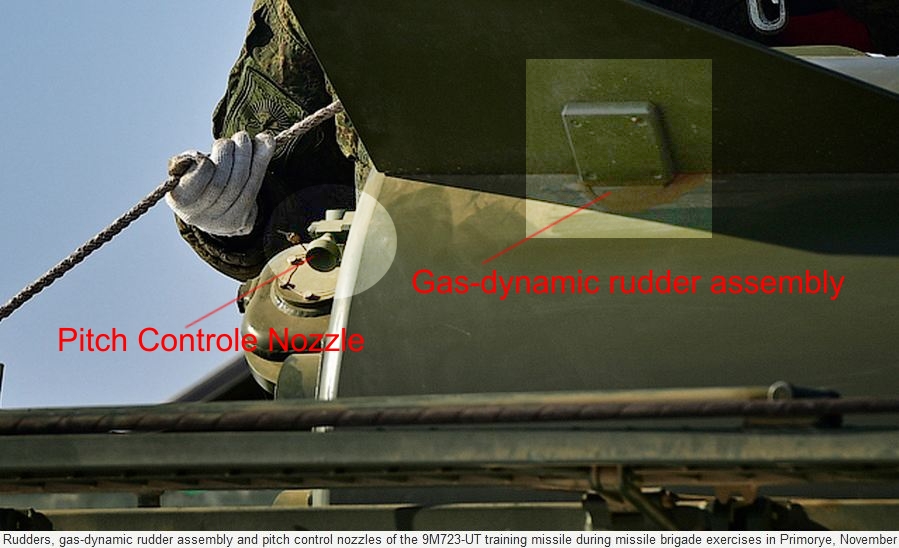
Arrow likes this post

lyle6- Posts : 2586
Points : 2580
Join date : 2020-09-14
Location : Philippines
- Post n°511
 Re: Iskander-M/K (SS-26 Stone):
Re: Iskander-M/K (SS-26 Stone):
Iskander has two missiles per launcher for a reason...
You put a high guard an Iskander will uppercut you from down low. Defend against a low attack and the other missile will elbow you from above.
Last edited by lyle6 on Sun Oct 13, 2024 8:21 pm; edited 1 time in total
Mir likes this post

Arrow- Posts : 3471
Points : 3461
Join date : 2012-02-13
- Post n°512
 Re: Iskander-M/K (SS-26 Stone):
Re: Iskander-M/K (SS-26 Stone):
In summary, movable fins (aerodynamic rudders) are used for steering in the atmosphere, while pitch control nozzles are used for maneuvering at high altitudes where the atmosphere is very thin. Although they can also operate in the atmosphere
And the ability to control during the engine phase of the main TVC engine. It's good that we have detailed photos of the Iskander. It's a pity that there are no similar ones of the Cirkon, because it's a much more interesting missile.
It's good that we have detailed photos of the Iskander. It's a pity that there are no similar ones of the Cirkon, because it's a much more interesting missile.
And the ability to control during the engine phase of the main TVC engine.
Mir likes this post

Mir- Posts : 3824
Points : 3822
Join date : 2021-06-10
- Post n°513
 Re: Iskander-M/K (SS-26 Stone):
Re: Iskander-M/K (SS-26 Stone):
lyle6 wrote:
You put a high guard an Iskander will uppercut you from down low. Defend against a low attack and the other missile will elbow you from above.
The new Iskander-K GLCM variant (9M729) will have 4 missiles per launcher - some sources say 6. These will be a deadly long range combo with the Iskander-1000.

GarryB- Posts : 40537
Points : 41037
Join date : 2010-03-30
Location : New Zealand
- Post n°514
 Re: Iskander-M/K (SS-26 Stone):
Re: Iskander-M/K (SS-26 Stone):
Yeah about those shipping boxes...The missile container ship with the missile as is - fins included.
A control surface would be vulnerable to impact damage and would be attached later. When lifted out of its container and into the launcher or transport vehicle a 4 ton missile hanging from a crane lightly impacting something during handling would rip a control surface off or damage it.
A stabiliser fin on the other hand...
A somewhat interesting translated graphic on the various trajectories utilized by the Iskander missile.
Some guy makes a diagram suggesting extending the range if the missile by adding a lofted trajectory component outside the atmosphere (which would be about 100km or so) and you think this is proof of something?
With a little research I've noticed that the "fins" on the Iskander missile are in fact referred to as "rudders' in Russian which itself is quite interesting, because a rudder is by definition a steerable or a moving part.
Or a mistranslation of keel or stabiliser.
You put a high guard an Iskander will uppercut you from down low. Defend against a low attack and the other missile will elbow you from above.
That might have been an original plan but with experience it is pretty clear that both missiles are going to reach their target anyway.
That drawing from 2021 looks like a suggestion to extend the range of the Iskander beyond the 500km design limitation by using a lofted trajectory up into space.

ALAMO- Posts : 7487
Points : 7577
Join date : 2014-11-26
- Post n°516
 Re: Iskander-M/K (SS-26 Stone):
Re: Iskander-M/K (SS-26 Stone):
"Rul" is clearly a rudder. "Rul upravlyenya" laves no space for interpretation, it is steering rudder.
"Uzel gazodynamicheskih rulyey" can be translated as a section of gas steering.
"Sopla upravlyenya tangazhem" is tricky, because "tangazh" is a specific Russian word that has a clear technical meaning of "horizontal steering" - so it will be the nozzle of horizontal steering.
Need me to make a colourful circles which is which?
But I guess that the fact is the last thing being pushed here, you know
"Uzel gazodynamicheskih rulyey" can be translated as a section of gas steering.
"Sopla upravlyenya tangazhem" is tricky, because "tangazh" is a specific Russian word that has a clear technical meaning of "horizontal steering" - so it will be the nozzle of horizontal steering.
Need me to make a colourful circles which is which?

But I guess that the fact is the last thing being pushed here, you know

The-thing-next-door- Posts : 1393
Points : 1449
Join date : 2017-09-19
Location : Uranus
- Post n°517
 Re: Iskander-M/K (SS-26 Stone):
Re: Iskander-M/K (SS-26 Stone):
How much thrust could those tiny thrusters have? I imagine it would only be enough to change the angle of the missile.

Mir- Posts : 3824
Points : 3822
Join date : 2021-06-10
- Post n°518
 Re: Iskander-M/K (SS-26 Stone):
Re: Iskander-M/K (SS-26 Stone):
Well the Russian have very extensive knowledge on how to maneuver in outer space - so it should work perfectly 


Arrow- Posts : 3471
Points : 3461
Join date : 2012-02-13
- Post n°519
 Re: Iskander-M/K (SS-26 Stone):
Re: Iskander-M/K (SS-26 Stone):
Well the Russian have very extensive knowledge on how to maneuver in outer space - so it should work perfectly wrote:
I'm actually wondering if the Avangard also has any additional jets for space maneuvers after bouncing off the atmosphere.

Mir- Posts : 3824
Points : 3822
Join date : 2021-06-10
- Post n°520
 temp Iskander thread
temp Iskander thread
It would be good if the Mods could move this conversation from post 167 to the Iskander thread please.
https://www.russiadefence.net/t75p450-iskander-m-k-ss-26-stone
https://www.russiadefence.net/t75p450-iskander-m-k-ss-26-stone

GarryB- Posts : 40537
Points : 41037
Join date : 2010-03-30
Location : New Zealand
- Post n°521
 temp stone thread
temp stone thread
Yes, that's true. The apogee of the parabola is about 50 km.
Its flight path is not a parabola because it is not a ballistic missile.
Look up the meaning of quasi in the term quasi ballistic.
Mir produced a drawing claiming to show an alternative ballistic flight path where the missile leaves the atmosphere which might be used to extend flight range, but it is the lower flight path that the missile is used with normally.
Other posts of this topic have been moved along with the Iskander thread to the Russian Army section where it belongs...
Here.
Mir likes this post

Mir- Posts : 3824
Points : 3822
Join date : 2021-06-10
- Post n°522
 Re: Iskander-M/K (SS-26 Stone):
Re: Iskander-M/K (SS-26 Stone):
Thanks GarryB for moving all the stuff. Made a slight mistake though 
I should have asked "from post 162" and not post 167. Would be nice if you could include those as well, but no biggie if you can't.
I should have asked "from post 162" and not post 167. Would be nice if you could include those as well, but no biggie if you can't.

Mir- Posts : 3824
Points : 3822
Join date : 2021-06-10
- Post n°523
 Re: Iskander-M/K (SS-26 Stone):
Re: Iskander-M/K (SS-26 Stone):
I've had a look at this thread and spotted this post above. The still is from Combat Approved - I think.
Anyway that clip actually shows an older missile design. It's the Iskander-E, but it even has an older history. It dates back to about 1991 and was an experimental version of the Iskander known as 9P760 and it was based on the BAZ-6954 chassis. The 9P760 only had one missile ready for launch.

Better pick of the Iskander-E missile.
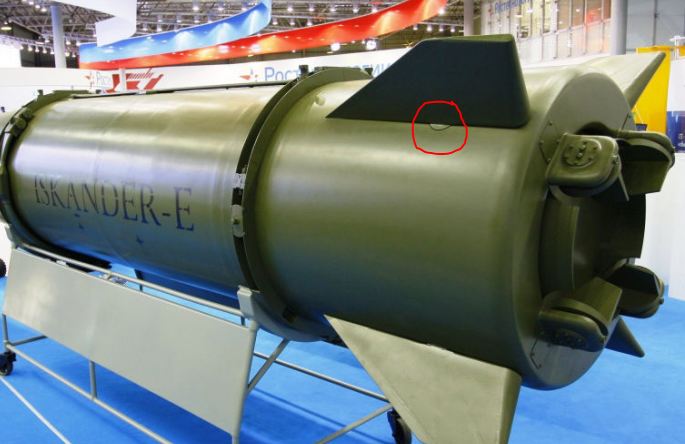
However this one below may just be the actual downgraded missile - or maybe NOT?
The fins or rudders are the same as on the Iskander-E.
Perhaps even the elusive optical guided version?

Hole likes this post

Arrow- Posts : 3471
Points : 3461
Join date : 2012-02-13
- Post n°524
 Re: Iskander-M/K (SS-26 Stone):
Re: Iskander-M/K (SS-26 Stone):
I've had a look at this thread and spotted this post above. The still is from Combat Approved - I think. Anyway that clip actually shows an older missile design. It's the Iskander-E, but it even has an older history. It dates back to about 1991 and was an experimental version of the Iskander known as 9P760 and it was based on the BAZ-6954 chassis. The 9P760 only had one missile ready for launch. wrote:
You can clearly see that there are no small jets for maneuvering etc.
Mir likes this post

GarryB- Posts : 40537
Points : 41037
Join date : 2010-03-30
Location : New Zealand
- Post n°525
 Re: Iskander-M/K (SS-26 Stone):
Re: Iskander-M/K (SS-26 Stone):
Those aren't manouvering jets... those are locations for Decoys...
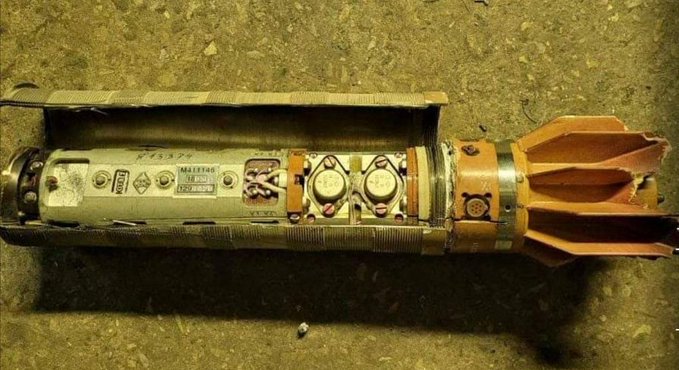
Missiles that use thrusters for manouvering have side facing rockets to rotate the missile or vehicle, having thruster rockets facing backwards like that would have no effect on the manouvering of the vehicle in practical terms.
Those are tubes for ejecting drone jammers that fall with the missile and maintain a trajectory and likely have a few corner reflectors inside as well as electronic emitters pretending to be the Iskander missile in the hopes the enemy air defence will hit it instead of the actual missile.

Missiles that use thrusters for manouvering have side facing rockets to rotate the missile or vehicle, having thruster rockets facing backwards like that would have no effect on the manouvering of the vehicle in practical terms.
Those are tubes for ejecting drone jammers that fall with the missile and maintain a trajectory and likely have a few corner reflectors inside as well as electronic emitters pretending to be the Iskander missile in the hopes the enemy air defence will hit it instead of the actual missile.
flamming_python likes this post



 Arrow
Arrow


